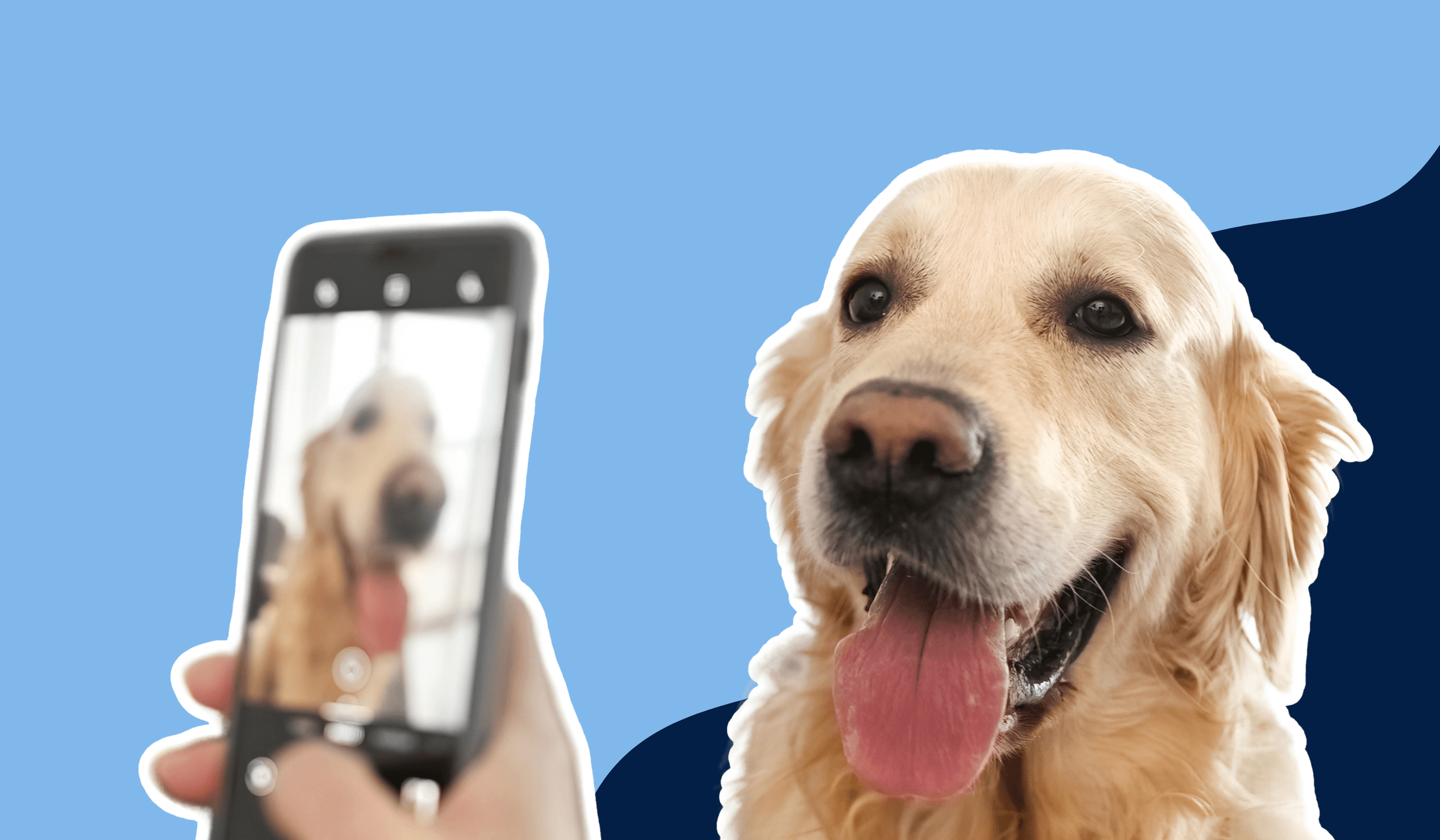
If you work in a veterinary clinic, you’re surrounded by supremely photogenic models every single day. Puppies with oversized paws, curious kittens, sleepy seniors, and the occasional exotic surprise - it’s a content goldmine. And chances are, you’ve snapped a few quick photos for Instagram, your website, or a blog post.
However, those on-the-fly shots don’t always do your patients justice. Maybe the lighting’s off, the pet’s a blur, or the photo just doesn’t capture how sweet, goofy, or majestic the animal really is.
The good news is, getting a great shot doesn’t require fancy equipment or a professional setup. With just your smartphone and a few simple techniques, you can take clear, engaging, genuinely good-looking photos that showcase your patients at their best - and help your marketing shine.
Here are 10 simple tips to level up your animal photography game.
1. Get on their level
Instead of shooting from above, crouch down so your camera is at the same height as the animal’s eyes.
Photos taken at eye level feel more personal and natural, and they help the viewer connect with the pet’s expression.
Yes, you might have to get a little low or awkward, but it’s worth it for the result.
2. Find natural light
Lighting can make or break a photo. Whenever possible, skip the overhead fluorescents and turn off the flash. Instead, take advantage of natural light from a nearby window or head outdoors if it's safe and practical.
Morning and late afternoon offer the best soft, warm light, while midday sun can be harsh and unflattering.
3. Focus on the eyes
In photography, sharp eyes are key - they draw people in and make the photo feel alive.
On most smartphones, you can tap the screen to tell the camera where to focus. Make sure the eyes are in focus, even if other parts of the image are slightly blurred.
4. Take more photos than you think you need
Great pet photos rarely happen on the first try. Animals move, blink, yawn, sneeze, or suddenly decide they're done being cute.
The key is to keep shooting.
Don’t stop at one or two snaps - take a dozen (or more). Consider using burst mode (by holding down the shutter button) to take multiple shots in rapid succession.
You’ll end up with a mix of blinks, blurs, and weird angles, but somewhere in there will be the shot. More photos mean more chances to capture that perfect expression or unexpected moment.
5. Clean your lens
This sounds basic, but it’s easy to forget. Your phone lives in your pocket, your bag, or wherever you last left it - so that lens is probably smudged.
A quick wipe with a clean cloth (or even your shirt in a pinch) can make your photos instantly sharper.
6. Stay calm and patient
Trying to wrangle a nervous or excited pet into the perfect pose rarely ends well. Take a moment to let the animal get comfortable, and keep your movements slow and your voice calm.
A relaxed pet is far more likely to give you a natural expression - and a better photo.
7. Use toys or treats - but don’t overdo it
If you want the pet to look directly at the camera, hold up a treat or favorite toy just above your phone. It’s a simple trick that helps direct their gaze and keeps their attention.
That said, avoid overstimulating them with constant squeaks or bribes - they’ll either get too hyped or lose interest altogether.
8. Turn off the flash
This is probably self-explanatory for anyone working in a clinic, but it’s worth repeating: sudden bursts of bright light can be stressful for some animals.
Beyond that, flash rarely helps your photo. It can wash out fur, create harsh shadows, or give pets those eerie glowing eyes. Stick to natural or ambient light whenever possible, and adjust the brightness later if needed.
9. Enable gridlines for better composition
Most smartphone camera apps let you turn on a grid overlay that divides your screen into nine equal sections - this is the foundation of the rule of thirds.
Instead of centering your subject, try positioning the animal’s eyes or face near one of the points where the lines intersect. This off-center placement creates a more balanced, natural-looking photo and draws the viewer’s eye more effectively.
It’s a small shift that can make your images feel instantly more professional.
10. Edit sparingly
Even a great photo can benefit from a little touch-up. Adjust the brightness, increase contrast slightly, and crop out distractions to bring the focus back to the pet.
Your phone’s built-in editing tools are usually enough, but apps like Snapseed or Lightroom Mobile offer more flexibility if you want to fine-tune things.
Conclusion
You don’t need to be a professional photographer to take professional-looking pet photos. With a bit of planning, some patience, and a few smart techniques, you can create images that show off your patients’ personalities and make your clinic’s marketing stand out.
Great photos don’t just make your social feed look better - they build trust with clients, highlight the quality of your care, and help you tell the story of your practice. So next time a patient is in and looking especially cute, grab your phone, get down to their level, and take the time to capture something worth sharing!
Looking for more ways to elevate your marketing game? Check out our new 65+ page toolkit, packed with tips and tricks to help you build your online presence, establish your brand and find new clients. Download your FREE copy today!